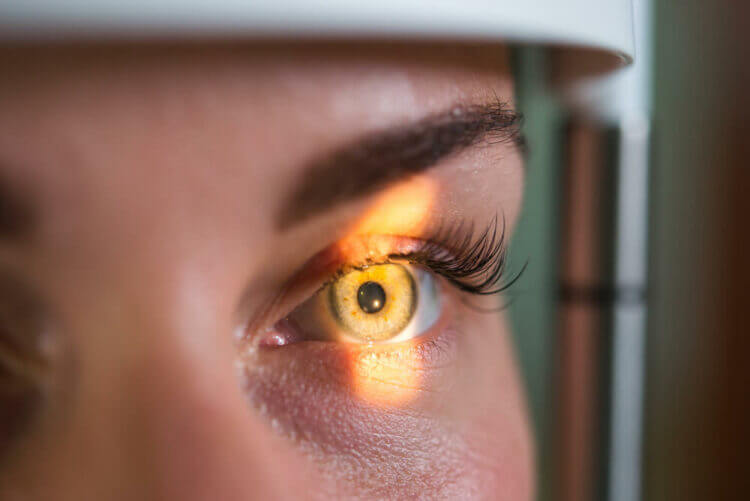
Retinal Tears and Detachment Can Lead to Blindness
The retina of your eye plays a dominant role in vision. Light entering your eye is focused on the retina at the back of your eye. The retina converts the information contained in the light into neural signals that the brain translates into images. If the retina in one of your eyes quits functioning, you will lose sight in that eye. Regular eye exams will detect problems happening inside of your eyes. Our eye doctors at Spectrum Eye Physicians are well-trained in the field of optometry to diagnose and provide eye treatment for retinal disorders.
The Causes of Retinal Tears and Detachments
The inside of your eye is filled with a clear jelly-like substance called vitreous that is lightly attached to the retina. As your eye moves, the vitreous gel freely moves away from the retina. As we age, the vitreous fluid consistency changes. Instead of freely moving away from the retina as the eye moves, it can start to drag the retina. This dragging can cause the retina to tear. The vitreous gel can also shrink and change shape. This also can pull on your retina and create a tear in it.
When a tear occurs in your retina, some of the vitreous fluid can seep through the tear. The fluid gets in between the retina and back wall of the eye causing a separation. The retina does not work when it is separated from the back wall of the eye.
Symptoms of a Retinal Separation
The symptoms of retinal detachment in themselves do not prove that it is occurring. Only a close examination of your eye can give you a definitive answer. By dilating your pupils, our eye doctor can see the back of your eye and notice a tear or retinal detachment taking place. Below are some symptoms that would call for an emergency eye exam appointment.
- A sudden increase in the size and amount of floaters: Floaters are tiny clumps of gel or cells floating around in the vitreous fluid. They create a shadow against your retina and show up as dots, lines, and circles. Normally, they come and go and are of no consequence. But if you notice a sudden increase in them or they get larger, you should have your eyes examined.
- The sudden and constant appearance of flashes: Flashes are spots of light that you see in your field of vision. They may look like shooting stars or lightning streaks. Flashes happen inside of your eye. One cause is the vitreous gel pulling on your retina. If it happens on occasion, you should not worry, but do mention it to your eye doctor. But if you suddenly start seeing repeated flashes, your retina could be starting to detach. This is especially true if the flashes are happening in conjunction with an increased amount of floaters.
- A shadow appears in your peripheral field of vision.
- A gray curtain that starts at one side of your field of vision and moves across to the other side.
Treatments for Retinal Tears and Detachments
Retinal tears and detachments are only treated with eye surgeries. Your eye surgeon will need to remove the vitreous fluid from behind your retina so it can relax again up against the eyewall. The tear will have to be sealed to keep more fluid from passing through. Other surgical procedures are available to push a detached retina back against the eyewall. Your eye doctor will discuss the best options for your situation.
The vast majority of retinal attachment surgeries are successful. It may take several months for your vision to improve. Some patients do not recover any of their lost vision. That is why it is important to have regular eye exams or arrange an emergency appointment at the first sign of problems.
Contact Spectrum Eye Physicians Today!
Schedule your appointment online or call us at 408-884-2215. No matter which of our locations you visit, you will receive the latest in eye care technology from friendly eye doctors and staff committed to serving you.
Request Appointment